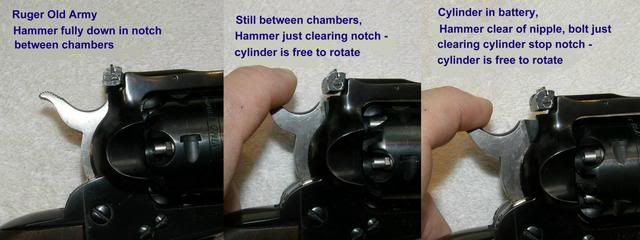- Joined
- May 9, 2005
- Messages
- 1,549
- Reaction score
- 100
There was one maker, Manhattan, that designed cylinder stop notches in between the chambers, so the pistol could be safely carried with all chambers loaded.
But then again, at tleast the first two series of Manhattans were five-shot .36's, so having all chambers loaded was a lot handier.
I wonder why this system was never copied, especially in lighter calibers, where metal removal wouldn't be too great a problem.
But then again, at tleast the first two series of Manhattans were five-shot .36's, so having all chambers loaded was a lot handier.
I wonder why this system was never copied, especially in lighter calibers, where metal removal wouldn't be too great a problem.







